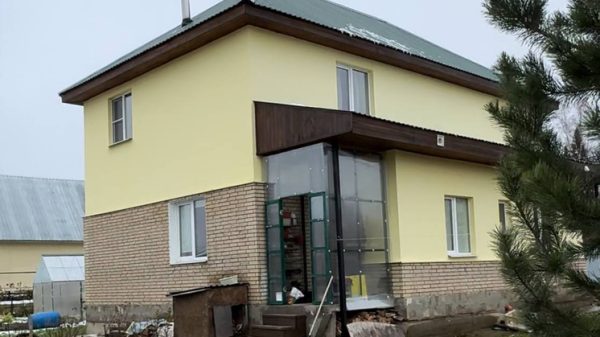Kern county, which sprawls more than 8,000 square miles, connecting the Sierra Nevada slopes and the Mojave Desert to the counties on the Central Coast, is the oil capital of California. The county produces about 70% of the state’s oil and more than 90% of its natural gas – and it has plans to ramp up production.
This week the county approved an ordinance that would allow thousands of new wells to be drilled over the next 15 years. The decision comes despite deep opposition from local farmers and environmental groups, and it puts the county directly at odds with a state that has branded itself as a trailblazer on climate and set ambitious goals to reduce greenhouse gas emissions.
In doing so, Kern has become a microcosm of a debate happening across America – and around the world – about how to tackle the climate crisis in communities that are built on fossil fuels.
“Kern county runs on oil,” as the county chairman, Phillip Peters, concisely puts it.
The debate has been going on for years, according to Ethan Elkind, a director at the Center for Law, Energy and the Environment at University of California, Berkeley, School of Law. “What you are seeing here is the main oil and gas producing county in California is going one direction and the state is trying to go a different direction,” he explains, “and it’s so far unwilling to override the county on the issue of local oil and gas production.”
It’s a complicated problem. Kern is also a leader in renewable energy production, accounting for roughly 25% of California’s supply, but officials argue there is not yet enough revenue from the new industries. For Kern, a county where nearly 20% live below the poverty line, expanding oil production means expanding the budget.
“This is a fiscal imbalance that has to be resolved before you start talking about a just transition,” said Lorelei Oviatt, the director of the Kern county planning and natural resources department, during Monday’s vote to approve the new ordinance. “We are looking at the difference between $1.5m a year and $80m a year. Until that is resolved, the idea of banning fossil fuel extraction does not seem realistic.”
Roughly one in seven workers in Kern are employed by the industry or tied to it. A county analysis done last year found that the oil and gas industry funded the county to the tune of almost $200m a year. Roughly half of that, $103m, went to Kern county schools.
Health and environmental concerns
The question over Kern county’s future came to a head on Monday at a community meeting before the county’s vote on the new drilling plans. Hundreds of people from the community and across California called in to speak. Mike Maggard, a county supervisor, called it the “longest public hearing on a single issue” he had seen in his long career.
Farmers voiced concerns about how the land, water, and air would be affected, while justice advocates highlighted how increased pollution would take the harshest toll on the most vulnerable. Others shared their stories about how the oil industry had given them job opportunities that changed their lives.
After a meeting that stretched across nearly 11 hours, it took the county board of supervisors minutes to vote unanimously to approve the new ordinance.
The ordinance, a scaled-back version of one that originally passed in 2015 but was struck down after an environmental review, will allow for roughly 40,000 wells to be permitted through 2034. It also requires producers to take steps to soften their impact on the environment, including paying into funds to help mitigate some of the negative impacts.
An environmental impact assessment conducted by the county found many problems could not be avoided, including more issues with air and water quality and increases in greenhouse gas emissions. The new projects will also put greater strain on the groundwater supply in an agricultural region that already struggles with drought, and where many lack access to clean drinking water.
But there is a trove of recoverable reserves still left in the ground, according to reports from the US Energy Information Administration, including approximately 2bn barrels of oil and 1.5tn cubic feet of natural gas, and Kern county officials favor developing what is under their feet for as long as they can.
The cash comes with a high cost. Each year, the American Lung Association ranks cities in the region among the worst in the US for air quality and gives the county an F rating for both ozone and particle pollution. More than 30% of kids under 17 are diagnosed with asthma in Kern, more than double the rate across the state. Dozens of peer-reviewed studies done in high oil-producing areas across the country have found that living close to a drilling site correlated with high rates of cancer and respiratory and cardiovascular disease. And close to 60% of those living within a mile of the current oil and gas wells are people of color, according to a 2014 report from the National Resources Defense Council.
Juan Flores, a community organizer for the Center on Race, Poverty and the Environment, has called the decision “inexcusable and shameful”.
“The board of supervisors’ vote to pass this ordinance shows they are willing to turn a blind eye to the chronic health problems, disastrous environmental impacts, and disruptions to already disadvantaged communities of color that adding tens of thousands of new wells would create,” Flores said in a statement, vowing to keep fighting.
Mercedes Macias, a senior organizer with the Sierra Club who lives and works in Kern county, says advocates will begin pushing the state to crack down on the county.
“By passing this ordinance, the board of supervisors has made clear that they are willing to turn their backs on our community in favor of propping up the oil industry – and it’s no exaggeration to say that people could die as a result,” she says, emphasizing that the environmental and health risks take a disproportionate toll on communities of color.
Calls for state intervention
On Wednesday, community and environmental groups filed a lawsuit against the ordinance in Kern county superior court, naming the county, the board of supervisors, the California Independent Petroleum Association and the Western States Petroleum Association and arguing that the environmental review conducted was inadequate. The groups also claim that the new ordinance will fast-track oil and gas projects and inhibit public participation and environmental assessments going into the future.
Meanwhile, advocates are staking their hopes in part on a state bill that would ban new permits for fracking and several other methods of oil recovery and set stricter standards on how close wells can be from schools and homes. If passed, the bill would also create a program for oil and gas workers who are displaced, but so far the plan is scant on details.
California is facing the effects of the climate crisis on multiple fronts – from drought to coastal erosion to record-setting wildfires. Meanwhile, the state has set some of the country’s most ambitious goals to reduce its reliance on fossil fuels, including a 40% reduction in emissions from 1990 levels by 2030.
‘California and Texas are warnings’: blackouts show US deeply unprepared for the climate crisis
Read more
But state auditors have said that, at the current rate of reductions, California is not on track to hit its target. The governor, Gavin Newsom, has been outspoken on the issue but hesitant to intervene at the county level, or offer a clear plan for how to transition communities that are financially dependent on oil and gas.
Most of the state’s focus, though, has been on reducing transportation emissions and the demand for fossil fuels, which has increased since 2013. The state’s housing crisis has pushed people to live farther from city centers, increasing commute times, and the market for quick deliveries and app-based rides has put more cars and trucks on the roads.
Last year, in an attempt to reign in growing emissions from transportation, Newsom issued an executive order requiring all new passenger vehicles sold in the state after 2035 to be zero-emission, calling it the “most impactful step our state can take to fight climate change”.
Melissa Hurtado, a state senator whose district covers parts of Kern county, agrees that more needs to be done. “Our climate change policies and goals have not been working; instead they have created inequities in our most vulnerable communities,” she says. “The truth is climate change is here and we are in desperate need of a new vision on how to tackle the challenges of today, but also the challenges of tomorrow.”
Elkind, from the Center for Law, Energy and the Environment, says he would like to see the state plan for a more interventionist approach in places like Kern county.
“If the state were really going to get serious about stopping oil and gas production, they would have to essentially step in and tell counties like Kern that we have to phase this out,” Elkind says, adding that, so far, there have not been big attempts to get in the oil industry’s way.
“We need a managed, measured, multi-decade plan, with a clear signal that we are phasing things out,” he adds. “The state should be the ones to say we are phasing it out in California and the state should be the ones to make sure the transition is done as equitably, humanely, and economically sustainable as possible.”





























































Свежие комментарии